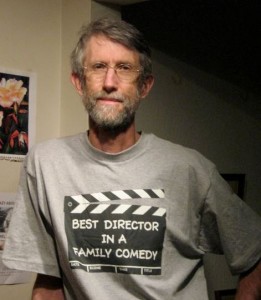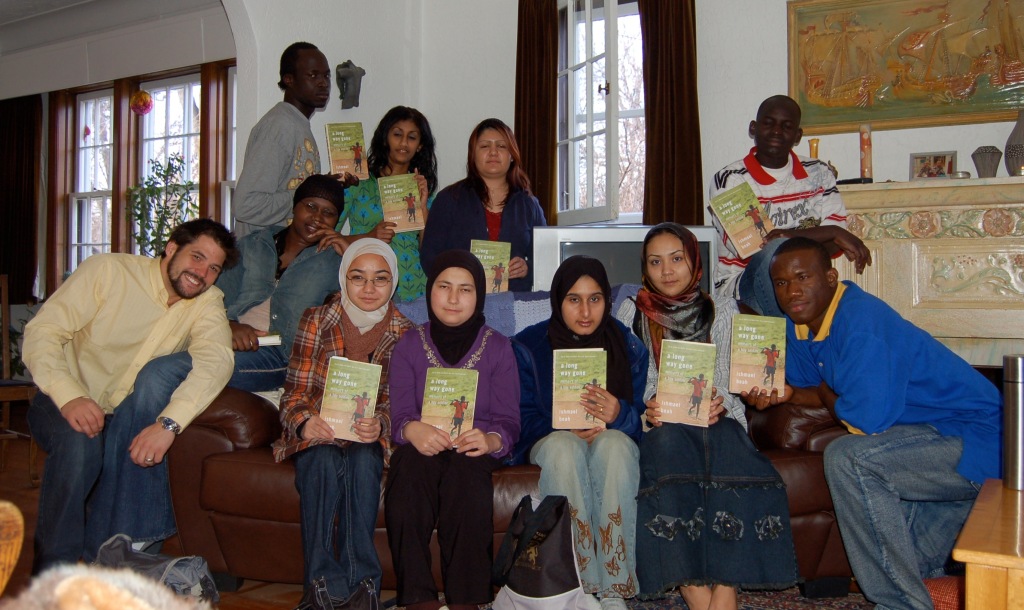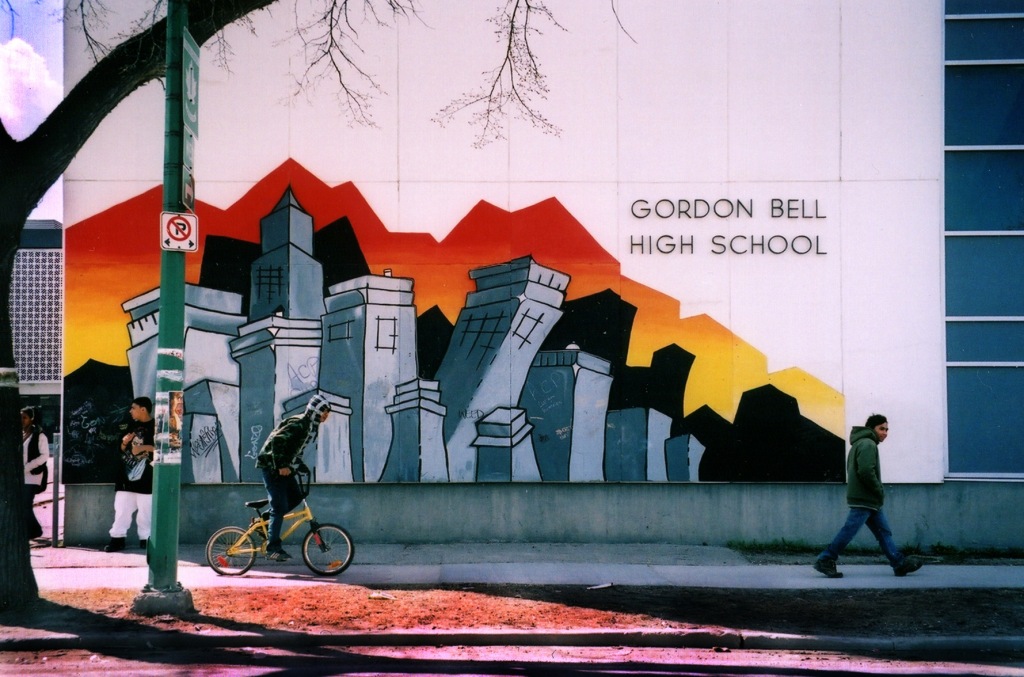 Last Monday, I attended Movie Monday here in Victoria, a regular cinematic experience, held every Monday night at the Eric Martin Theatre in Victoria. The film was The Storytelling Class. I was impressed, on all accounts.
Last Monday, I attended Movie Monday here in Victoria, a regular cinematic experience, held every Monday night at the Eric Martin Theatre in Victoria. The film was The Storytelling Class. I was impressed, on all accounts.
About Movie Monday
Movie Monday Victoria is the inspiration of Bruce Saunders (pictured left). While in the psychiatric ward of the Royal Jubilee Hospital, where he was dealing with a bipolar condition, he discovered a 100-seat lecture auditorium (Eric Martin Theatre) that had a video projector, and the idea of showing films there for patients and ex-patients captured his imagination. In 1993, only a month out of hospital, and working in partnership with another hospital support group colleague, Bruce began showing films on Monday nights. From modest beginnings, Movie Monday is today recognized as a “Best Practice” in the mental health system. Films are shown there, free (“donations gratefully received”), and open to the public, in addition to hospital patients. I live close by and attend from time-to-time. The films are always interesting. Often the films are followed by a discussion. Bruce acts as host and MC. He is a generous guy with a keen sense of humor, and always seems to be looking for ways to make each evening a rewarding experience for the audience.
The Storytelling Class
This documentary film features a high school in Winnipeg’s downtown core, ethnically diverse, where 58 different languages are spoken among the student population, and a large percentage of children arrive as refugees, traumatized, from various war torn areas of the world.
In an effort to build bridges of friendship and belonging across cultures and histories, Marc Kuly, a young teacher initiates an after-school storytelling project, whereby the immigrant students would share stories with their Canadian peers. As a catalyst for this year-long cross-cultural interaction, all the students (30 in total) read a long way gone: memoirs of a boy soldier, Ishmael Beah’s memoir of his horrific time as a boy soldier in Sierra Leone’s civil war, and his post-war challenges. The students and teacher take it from there, including a visit to the school by Beah (who has amazing insights on the human condition), and his American adoptive mother Laura Simms, also a renowned professional storyteller. Here’s a trailer for the film: (can’t see it? click here)
After the film showing, Marc Kuly, dialed in from his home in Winnipeg (with the improvisatory help of Bruce, holding a mic (connected to a PA system) up to a cell phone, after the main teleconference speaker failed), conversed with the film audience.
From a storytelling perspective, this film, and post-discussion, highlighted:
- First thing the students did was tell their name, we all have them, it’s the first part sharing our identity
- Each storytelling class/circle began with participants bowing to another (in an unplanned, emergence, type of way)
- A safe place was created to share the pain
- Everyone needs to tell their story; the most profound learning experience of the film for Mark was that, after the Canadian-born kids heard the refugees stories, his original plan was to wind down the project, the Canadian kids said no, we want to tell our story too and they did (“the compelling thing about the film is the way we the viewers are drawn in to the story as the kids, then the teacher, and the filmmaker realize its about more than just understanding the trauma of the immigrant kids from war torn areas. That’s when we all realize it’s a universal lesson we’re learning”
- For intercultural awareness, listening to life stories is even more powerful than music or other arts forms (Laura Simms also makes a striking point that the act of listening is as powerful as the telling)
- Each storyteller influences others in the group
- Co-creation, where students help create the curriculum
- Co-creation of meaning, as students share their stories together
- Kids found commonalities between cultures that textbooks don’t teach (it’s a shame few schools see the benefit of a course in intercultural communications)
- How cultures can help each other, directly, and in unique and subtle ways; e.g., some of the refugees continued to have bad dreams, years later, one of the local (Canadian) aboriginal students in the class made dream-catchers, an aboriginal tradition, for his multi -cultural classmates having bad dreams
- A way to honour every student
I loved this film, and what it represents. More than once, I shed a tear during the showing. It’s amazing what’s possible when people are given the opportunity to tell their story. (consistent with my experience at the Truth and Reconciliation Conference I attended last month).
80 hours of film footage, captured over a 1-year period, were edited down to the 60 minute film. It’s won a bunch of film festival awards recently. Further distribution is being sought. If you live in Victoria, you can rent the film, for home viewing, from Yo Video. Options for purchasing the film include through McNabb Connolly or emailing Sedna Pictures in Winnipeg; storytellingfilm(at)mts.net. The film holds promise for many contexts, beyond schools.
What context do you see this film being used?
All photos courtesy of Bruce Saunders and the filmmakers.
[If you enjoyed this post, please consider leaving a comment or� subscribing to this blog.]



Hi There,
I saw the documentary of The Storytellers, and I’m so proud of each one of those kids, because they found the strength to tell their stories. I need to congratulate Mr. Kuly for his amazing job, you are a real teacher, because every single kid in that class have a mark, a memory and emotions, they will never forget and they will use the rest of their life.
Congratulations all of You!!!
Indeed, Charlotte. The doc was/is inspirational.